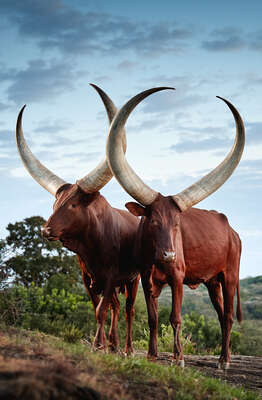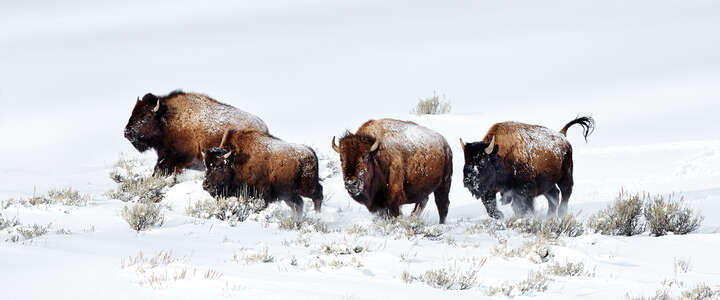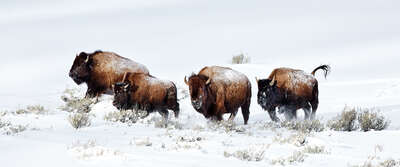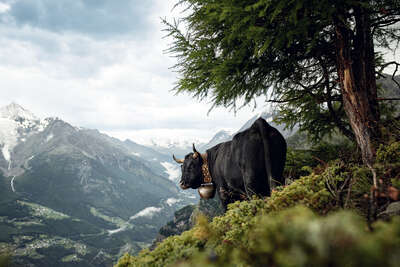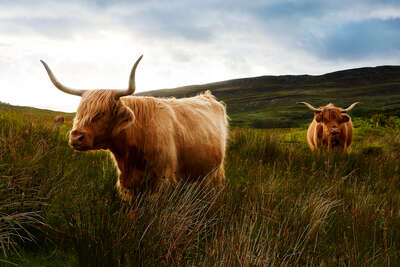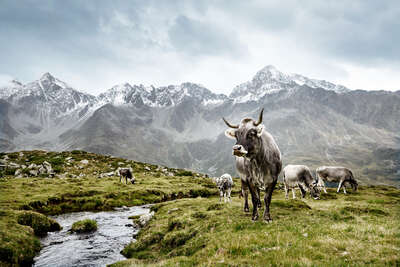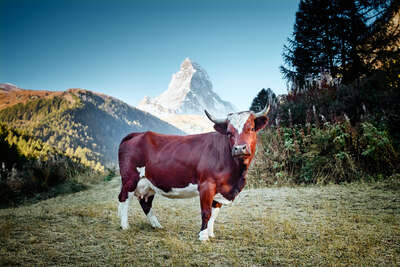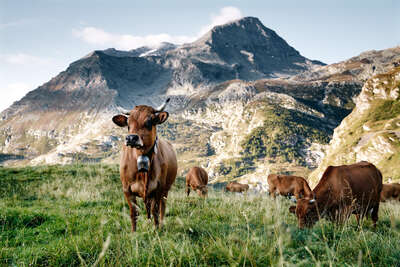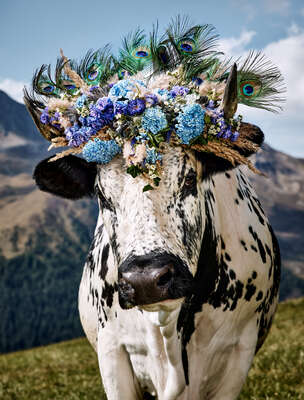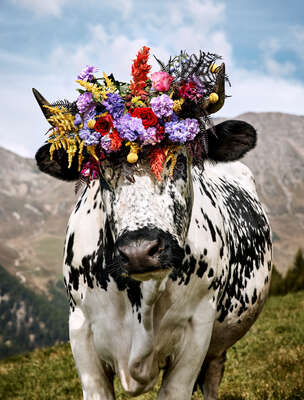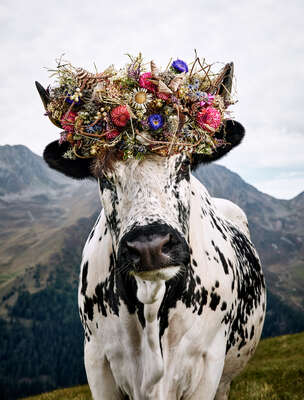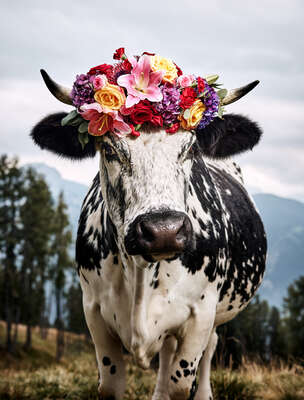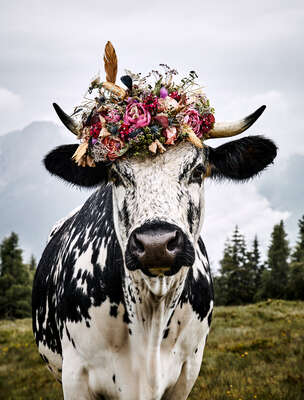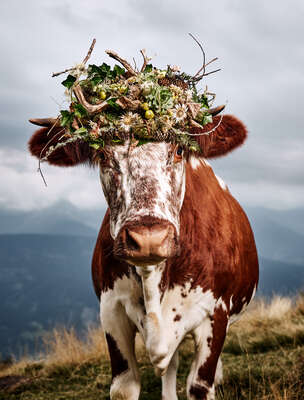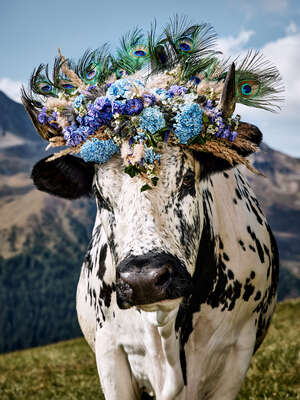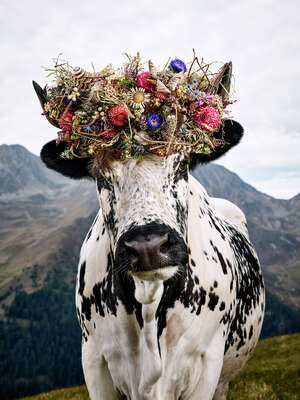Introduction
All the Ladies
Dressed ready for a ball, the cows in ‘All the Ladies’ present themselves like queens, adorned with splendid jewelry and aesthetic elegance. In her latest series, Ramona Waldner showcases the Pustertaler Sprinzen - a particularly majestic breed amongst cattle breeders. Her project pays homage to the Almabtrieb and to the cows themselves: "When you look directly into a cow's eyes, you feel its soul," says the photographer, who herself spent two years on an alpine pasture. Her series reinterprets the Almabtrieb, the annual festivity in which the cattle are driven into the valley wearing traditional headdresses. Ramona Waldner establishes her protagonists as personalities, capturing the innovative and handmade floral arrangements customized for each animal. The weather during the cattle drive is characterized by bleak conditions including fog, snow, and dreariness. Ramona Waldner disrupts this atmosphere through the deliberate and contrasting use of color. She creates a brilliant portrait of the vivid and unforgettable moment. The embellished animals cast a glow on their surroundings – enhancing their role as heroine of the landscape.
Cattle around the world
In 2014, Ramona Waldner received a very special assignment; the Austrian artist was contracted to spend a year and a half traveling the globe to photograph the world’s most fascinating and rare species of bovine. Entrepreneur and author Werner Lampert, who commissioned the project, gave her the following words to ponder on her way: “The cultural, religious, and societal development of mankind as it occurred would not have been possible without cattle.”
With that in mind, Waldner tracked down over 80 cattle breeds in the most remote locations. She traveled through Europe, Africa, and Asia to photograph these proud creatures in their natural habitats. Along the way, she trekked for days at a time and camped in the deepest jungles. “We saw places no tourist had ever set foot in before,” Waldner recounts. She sought out wild yaks in the Tibetan highlands and made her way through dense Cambodian jungles with a machete in search of rare or even lost breeds. The cultural significance of these animals varies greatly from place to place. In Uganda, cows are an important status symbol. In other parts of the world, they are considered sacred.
Danger was always nipping at the heels of Ramona Waldner and her team. Not only did she have to contend with icy temperatures, she encountered poachers’ traps and landmines along the way. In the end, the long journey paid off. Her striking photographs reveal the beauty of these gentle beasts. Waldner portrays the cattle with the utmost empathy, her photographs showing the respect and humility with which she approached the subjects. Seeing these images, we are captivated by the spectacular natural landscapes and the animals’ soulful expressions. Ramona Waldner’s Cattle around the World series is an homage to bovines and a subtle reminder of a link between man and animal that dates back millennia.
Bio
| 1987 | Born in Lienz, Austria |
| 2001-2006 | Secondary education in Art and Design, CHS Villach, Austria |
| 2008 | Master’s Degree in Photography, Innsbruck, Austria |
| 2008-2010 | WDA Design Academy, Salzburg, Austria |
| 2008-present | Freelance Photographer |
Interview
When did you become interested in art? How did it all begin?
From a young age I showed interest in design and eventually decided to express myself through art. I attended a school in which we learned a variety of techniques, from painting to sculpture and even photography. When I was sixteen, I received the opportunity to intern with a photographer in Paris who, at the time, only shot analog and developed the images himself. Working in the darkroom, shooting with musicians and artists, and photographing the streets of Paris was a magical experience for me. I found that the camera gave me access to exciting stories, places, and people – experiences that had to be captured in photographs. Following my internship, I set up a darkroom at home and became fasicnated by the ability to control the entire process.
How would you describe your work process?
When photographing, it’s essential that I focus 100% on the subject and engage with my surroundings, regardless of the subject at hand. Therefore, good preparation and proper planning is the best approach for me. For some productions, the photography itself is only a small portion of my work. I spend time beforehand meticulously planning and must be heavily involved in all steps, from conception to post-production. There are also emotional and social components that contribute to the success of a project, such as establishing trust. This requires time and patience.
Who inspires you?
Most often, I am inspired by people who yearn for something greater and willingly stand up for what they believe in; Those who are curaegous and eagerly push boundaries.
Which artists/works of art are you particularyly impressed with at the moment?
I first got my hands on Vincent Munier's books last year. I myself am drawn to understated motifs and imagery with a graphic design-like quality. His work, in my opinion, is magical and poetic. Aside from Munier, I am inspired by engaging personalities and pieces by artists such Ami Vitale.
What distinguishes a good work of art?
From my perspective, a work of art should evoke a feeling, trigger a train of thought, or raise a question. This initial, unpromtpted reaction is what creates the desire to learn more about a particular piece and it’s artist.
What projects are you working on at the moment?
I am intensely preparing for an extraordinary expedition in the summer of 2022. Together with an international team of 4 female skippers and 3 female alpinists, we plan to sail from France to Greenland. Once in Greenland, the alpinists will attempt a 1,000m climb up granite walls rising from the sea.
What is the purpose of art?
Art doesn’t have to serve a purpose, but it’s benefits are endless – inspire, move, narrate, criticize, shock, heal, challenge, or dimply delight.
Does art bring about happiness?
Art definitely makes people happy! Both as a spectator and as an artist in the prouduction process.
